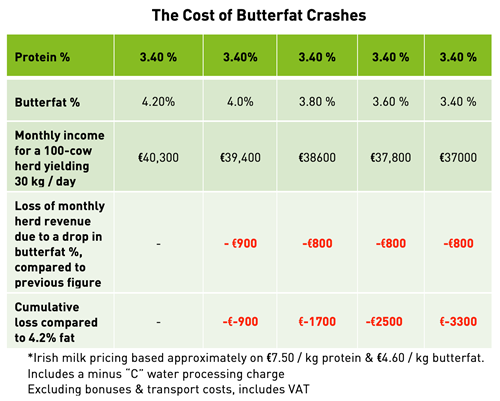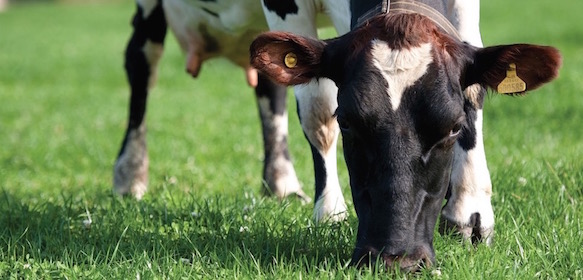It can often go undetected but there are some simple warning signs that you can look out for that can indicate a potential problem with SARA in your herd at this time of year:
Look at dung!
- Is dung loose, with gas bubbles in it? This can suggest excess production of acids in the rumen due to the rapid fermentation of grass resulting in SARA (also check protein and magnesium levels and for liver fluke)
- Are there undigested fibre particles in the dung? This can suggest reduced rumen digestion due to lowered pH (also check for energy and protein content relative to milk yield and stage of lactation, as low protein can also cause this). Also look for cud balls in collecting yards at milking, which are an indicator of poor rumen function.
Assess rumen fill
- Look at rumen fill 3-4 hours after morning milking - poor rumen fill can be caused by reduced dry matter (DM) intake due to acidic conditions in the rumen (also check for low DM grass and high protein grass, as this can also cause poor rumen fill)
Are cows cudding well?
- Are cows lying down ruminating? More than 65 per cent of the herd should be ruminating 2-3 hours after milking unless they are drinking or actively grazing. Drool and saliva should be observed around the muzzle, with more than 60 chews per cud where strong rumination is evident.
Are cows losing weight?
- Minimising weight loss for cows in early lactation is an absolute priority in order to ensure cows are in optimum body condition score at the start of the breeding season. Maximising dry matter intake is crucial from this perspective and issues like SARA and poor rumen function should be avoided to ensure that the rumen is drawing sufficient nutrition from the diet to support milk solids production and minimise condition loss. Pay particular attention to cows who have calved during the previous six weeks.
What’s happening with milk quality?
- If you notice a 0.3%-0.5% drop in butterfat over a week or a 0.3% drop in protein in milk, then this could indicate SARA. If milk yields drop by around 2-3 litres/cow/day over the course of a week then this can also indicate acidosis problems. Look at individual milk recording data - If more than 10% of the herd has a higher milk protein than milk fat % this indicates a potential problem with SARA. Averages can be misleading. It is worth noting that relatively high oil levels in grazed grass can also contribute to butterfat crashes during the grazing season and this is why it is worth working through the aforementioned points to ensure that SARA is the root of the issue.
The below table illustrates the effect on profitability of a sharp drop in butterfat levels on a 100-cow herd over the course of one month.

Research has shown that you can reduce the risk of SARA in your herd by adding Actisaf Sc 47 live yeast to your compound feed. Farmers can rest assured that if SARA does become an issue, Actisaf will stabilise rumen function and pH, minimising negative impacts on performance and cow comfort.
Even when SARA isn’t a problem, Actisaf significantly improves rumen efficiency, leading to increased digestion, better utilisation of grass and increased milk solids yield. Phileo UK & Ireland recommend that Actisaf is included at a minimum rate of 1-2kg/ton of compound feed depending on the compound feed rate, which will cost approximately €10-20 per ton.
Recent research from the University of Nottingham found that supplementing Actisaf to a high performing herd in the first four months of lactation increased feed efficiency by 5.5pc. This was achieved primarily through increased digestion of fibre in the rumen, which yielded an extra 5.9pc (or 2.8kg) of energy corrected milk with no change in feed intakes or body condition loss – providing an 8:1 return on the cost of Actisaf.
Effectively, the cows reached higher peak yield, and were projected to produce up to 580L of extra milk per 305-day lactation consequently lowering cost of production by more than 1 cent per litre. For a farm supplying 1 million litres this equates to €10,000 per year, presenting a significant opportunity for Irish dairy farmers to reduce costs this spring and summer.

